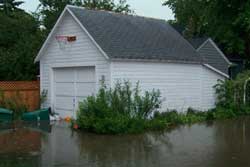A Baker’s Dozen – The Most Read Articles of 2013
Sometimes, in order to know where to go, it is helpful to see where we’ve been. These are the most read blogs from 2013.
https://www.hansenpolebuildings.com/blog/2013/03/board-and-batten-siding/
While popular, board and batten siding should be installed considering shear values. Advice on installing board and batten siding for structural integrity.
#12 Building Department Checklist Part I
https://www.hansenpolebuildings.com/blog/2013/01/building-department-checklist/
The 14 most important questions on your Building Department Checklist to ask while planning a new building. Pole buildings ascribe to local building codes, making them a solid and safe construction choice.
#11 Repainting Steel Building Panels
https://www.hansenpolebuildings.com/blog/2013/01/repainting-steel/
Repainting steel building panels can be labor intensive. Done right, results are favorable with cost savings. Tips on how to prepare steel panels for repainting.
#10 Steel Roofing: This Lap isn’t Dancing
https://www.hansenpolebuildings.com/blog/2013/02/steel-roofing-4/
Repainting steel building panels can be labor intensive. Done right, results are favorable with cost savings. Tips on how to prepare steel panels for repainting.
#9 Pole Barn or Block Foundation?
https://www.hansenpolebuildings.com/blog/2013/03/block-foundation/
The merits of typical pole barn foundation design versus block foundation. Concrete costs plus connection stability and longevity favor pole barn foundation design.
https://www.hansenpolebuildings.com/blog/2013/02/mikes-roof-rules/
My top rules for designing the roof of your new pole building. Tips to keep a roof leak free while withstanding years of abuse.
https://www.hansenpolebuildings.com/blog/2013/03/zip-up-ceiling/
Fast and easy to install, Zip up Ceiling is an aesthetically pleasing new ceiling choice for a pole building. Discover a grid-free, mold and mildew resistant alternative to drywall.
https://www.hansenpolebuildings.com/blog/2013/01/tico-10d-common-nails/
Choosing the right diameter and length nails is an important part of constructing a new building. Tico nails no longer exist, but 10d common nails in 1-1/2″ and 3″ are good standards.
https://www.hansenpolebuildings.com/blog/2013/03/poplar/
The use of yellow poplar for board and batten siding on pole barns. Discover why “new” poplar is not decay and disease resistant like poplar from days of old.
#4 What does 2×6 Lumber Weigh?
https://www.hansenpolebuildings.com/blog/2013/02/2×6-lumber/
Calculating the weight of 2×6 lumber is important when dead loads are applied to purlins attached to roof trusses. How many 2×6’s can a person carry on a jobsite?
https://www.hansenpolebuildings.com/blog/2013/01/2×4-studs/
Painting 2×4 studs a light magenta color began as a marketing ploy. Pink 2×4 studs brought increased sales and possibly subliminal breast cancer awareness.
#2 Pole Building Bar: A Road Runs Through It
https://www.hansenpolebuildings.com/blog/2013/05/pole-building-13/
Cruisers Bar in Stateline, Idaho shows the originality and functionality of a pole building bar designed for motorcyclists to literally drive through.
And the MOST READ article of 2013:
Pole Barn Flood Insurance
https://www.hansenpolebuildings.com/blog/2013/01/pole-barn-flood-insurance/
Pole barn flood insurance should be included in a pole building checklist prior to construction. A Flood Elevation Certificate must be obtained to qualify for flood insurance.







